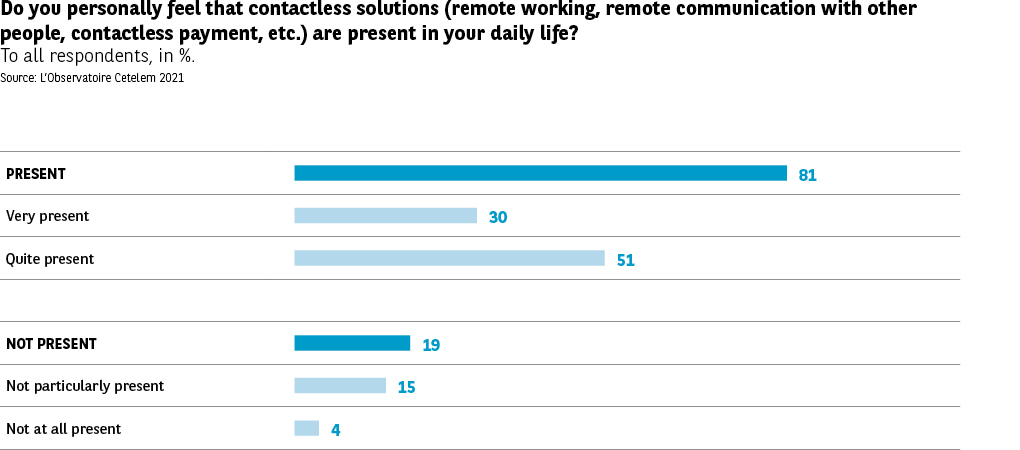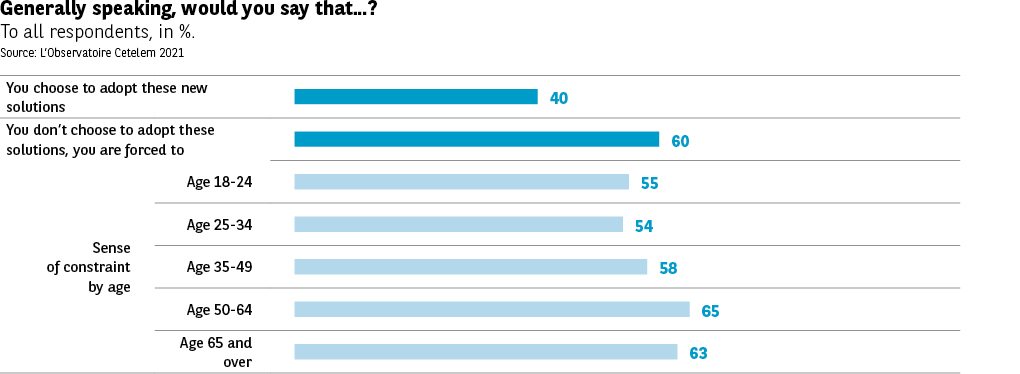Contactless living: a sense of constraint and dissatisfaction


An unquestionable presence in daily life
While Europeans are fully aware that contactless technologies were already in use previously, the fact that they are now a daily reality is just as evident to them. 8 out of 10 state that they are very present in their day-to-day life (Fig. 19). People’s opinions are generally homogeneous from one country to the next, although the Germans and Czechs are slightly less likely to hold this view (72% and 71%), while the Poles and Portuguese are the most convinced (90% and 89%). The feeling that contactless living is very much a reality is sufficiently widespread that no clear divide is apparent between the three geographical areas mentioned above.
8 out of 10 Europeans Feel that contactless solutions are present in their daily lives.
A reality that feels like a constraint
Understanding that contactless living is a reality does not mean that it is automatically accepted. 6 out of 10 Europeans see the changes associated with it as something of a constraint (Fig. 20). The prior existence of these practices makes the feeling that their adoption isn’t a choice less pronounced in some of the countries in the Northern group, such as Germany and the United Kingdom (52% and 53%), while most of the countries in the Eastern group seem to view contactless living as a constraint, which is particularly the case in Romania and Bulgaria (79% and 72%). The Latin countries are more divided. The Italians are the least likely to feel this sense of constraint, while the opinion of the French is similar to that of the Central European countries (69%).
However, the criteria of age and income level reveal varying attitudes on the question of contactless living being a constraint. Young people and higher-income households find it easier to accept these solutions (45% of 18-24 year olds, 46% of 25-34 year olds) than seniors and lower-income households (65% of 50-64 year olds, 63% of those aged 65 and over).
Changes that fail to appeal
Thus, these new developments tend to be seen as a constraint, but they are also viewed negatively by Europeans on the whole, given that only 45% actually like them. Once again, the United Kingdom and Germany display the greatest fondness for contactless solutions (56% and 52%) (Fig. 21). The Spanish are also more likely than not to display this attitude (55%). The geographical logic we have put forward is generally adhered to. The Romanians and Bulgarians are the least enamoured with these developments (18% and 32%). France’s score is again similar to that of these two countries (37%).
« We feel a little sad when we think about life as it was. It is difficult to think about the future. »



